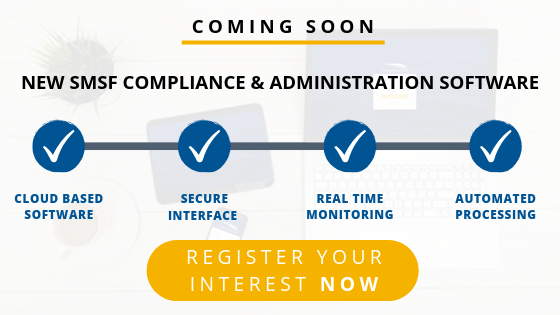How do I decide if buying a property through my SMSF is right for me?
Having an SMSF is usually all about having greater control over your super, but with this comes a serious set of responsibilities and obligations, along with the requirement to exercise self-control. These attributes are even more important should you consider purchasing property through your SMSF.
One very strict rule that is commonly misunderstood or not known is that if you are purchasing a residential property through your SMSF, you can’t live in it and neither can anyone related to you, even if they pay market-based rent.
Further to this, if you already own a residential property, your SMSF cannot purchase this from you – again, even at market price. If you feel you may be tempted to utilise said property, or need to purchase an investment property for family to live in – don’t use an SMSF.
Commercial/business premises, however, can be leased to you or a third party related to you, providing this is done on a commercial arms-length basis. This is a particularly attractive proposition to small business owners. Your SMSF can purchase a business premises from which you can conduct your business, and pay rent to the super fund.
Many small business people don’t pay themselves super, so paying rent that would otherwise go into someone else’s pocket into the super fund for their own retirement makes a lot of sense.
You may already own the building you run your business from. Subject to contribution caps and considering stamp duty and capital gains tax personally, you can contribute the premises to an SMSF, providing it is done at market value.
You need to have a decent balance already in super to make setting up an SMSF to buy property a viable proposition. This is very important should you need to obtain finance to complete the purchase.
Why? Banks will require an SMSF to have at least 40% of the value of the property as a deposit, will most likely charge a higher rate of interest and will not entertain approving finance for a fund that doesn’t have at least $200,000 initially, and decent liquidity (cash and/or shares) in the fund post property purchase.
This is due to the requirement that an SMSF can only borrow via a limited recourse borrowing arrangement (LRBA).
You need to consider whether the fund can cover ongoing property ownership costs should the property be vacant for a period and there is no rental income.
Similarly, if the meeting of mortgage payments is reliant on super guarantee contributions – what happens if one or all the members of the super fund become unemployed?
You can contribute personal monies (subject to contribution caps) if there is a cash flow issue within the fund, but they are counted as contributions and cannot be repaid to you. Do you have adequate monies outside of super to put into your SMSF should the need arise?
An SMSF can invest in anything, providing it meets the “sole purpose test”. That is, each investment made or action undertaken by the SMSF is done so for the sole purpose of providing retirement benefits for its members, or death benefits to a member’s beneficiaries if they die.
In the case of purchasing property, will it be providing an adequate income stream and what is the likelihood of capital growth? Will these be sufficient to ensure the members of the fund are able to access suitable income streams when eligible?
As a trustee of an SMSF you are required to formulate an investment strategy and consider among other things, the diversification of assets held. Diversification is considered an integral part of any long-term investment plan. It doesn’t guarantee gains or protect you from losses but assists in ensuring consistent returns over a period of time.
If your super fund’s only asset is property, you are putting all your “super eggs in one basket”. Is this appropriate for the members of the fund, their circumstances, age and risk tolerance? There is nothing that prevents the fund holding only real property, but make sure it is appropriate and is justified by the fund’s investment strategy.
Depending on your personal marginal rates of tax, the concessional tax rates offered to complying super funds may provide an incentive to consider setting up an SMSF to purchase property.
All earnings of an SMSF are taxed at 15%, and the effective rate of tax on any capital gains is 10%. Once the super fund is in retirement phase there is no tax payable on earnings and capital gains.
Are you willing to be very hands on with your super? Other asset classes allow for a “set and forget” approach. You need to be willing to be actively engaged in managing and being responsible for not only the SMSF, but also a property.
If you are a fan of the “renovator’s delight” and want to use your ability to flip a property to improve your super balance, you need to understand the additional rules that apply when the property is owned by an SMSF. If you’ve had to borrow to purchase the property, any improvements can only be paid with existing super monies, you can’t borrow to finance the renovations.
In addition to this, you will be in breach of the restrictive LRBA terms if you improve the property to the point it becomes “substantially different to the original asset”.
By Kimberlee Brown, Director with H&R Block SMSF Solutions
2. What are the key advantages of investing in property through my SMSF?
Combined investing as a couple or family
Combining your account balances with the other members of your family may give you the purchasing power you need to invest in a property that would be beyond your personal capacity at present.
It can be tax effective
The earnings within your superannuation fund are taxed at only 15% with a 33% capital gains discount for assets held more than 12 months (that is 10% CGT) and if you hold on to that property into pension phase, the rent and/or sale proceeds may be tax free. (Subject to the $1.6m pension transfer limit per member from 1 July 2017.)
Salary sacrifice
You can salary sacrifice additional income to pay off the loan quicker from pre-tax dollars. Paying 15% tax on salary sacrifice and then making additional repayments rather than paying your marginal tax rate on the income.
Supporting business growth
You can buy a business property to lease back to your own business. This may help free up funds to grow the business.
Bricks and mortar – feeling more in control of your investments
Many SMSF investors appreciate having control over the investments they buy and the ability to “value add” to their property repairs or renovations.
Land tax
The SMSF is a separate entity for land tax
By Liam Shorte, director of Verante Financial Planning
3. What are the risks of investing in property through my SMSF?
Property investment using an SMSF will not make it immune to any of the usual risks involved in property investment. There are some issues, however, that are unique to holding property in an SMSF and they are outlined as follows.
Property is a lumpy, relatively illiquid asset. It can take time to sell and settle and you aren’t able to sell a part of it – it’s all or nothing.
Once members move into retirement phase there must be a minimum drawdown from the fund each year to maintain the funds’ tax-exempt status. If the property isn’t positively geared, and the fund only holds the property and little cash, it is difficult to meet these requirements.
It proves a difficult asset to hold when the focus of the fund moves from the building of wealth for retirement, to being in retirement and needing to draw a regular income stream.
The usual strategy is to sell the property when members reach retirement to have sufficient liquidity to pay the appropriate income streams. The timing of this may not be ideal if the property hasn’t been held for sufficient time or there is still a decent mortgage over the property. These scenarios need to be worked through as part of the fund’s long-term investment strategy.
Properties have ongoing costs and without sufficient contributions to the fund and rental income these become difficult to finance within the fund. As well as regular ongoing costs, there may be large unexpected costs that will also need to be financed. You may need to find personal monies to cover these costs, and they can’t be paid back by the fund.
You need to consider the impact that purchasing property within an SMSF will have on your non-superannuation monies.
The superannuation space continues to be subject to legislative changes. It is not known whether future changes may impact negatively on those who hold property within an SMSF.
If the property investment requires finance, the additional requirements involved because it is being purchased in an SMSF are both more expensive and complicated. Failure to understand these complexities or engage appropriate professionals who know how to navigate the space can result in further unnecessary costs and potential loss of your retirement savings.
Additional stamp duty is a big danger if a property purchased via an LRBA for an SMSF is not executed correctly.
If you don’t already have an SMSF but want to establish one to purchase property and you require finance, it is strongly recommend you gain pre-approval first.
If you set up an SMSF then seek finance, you may be disappointed to find that you are unable to gain sufficient finance for your proposed plan and you are left with having to pay for the establishment of the fund and the ongoing compliance obligations that come with it. It’s a much harder set of rules and obligations that need to be met by the SMSF than if you were to do the same personally.
The temptation! If you have purchased a residential property or holiday home through your SMSF, you must resist temptation to use it personally or let anyone related to you do so. Doing so risks the complying status of your super fund and, in the worst-case scenario, the loss of the majority of your super in tax and fines.
By Kimberlee Brown, Director with H&R Block SMSF Solutions
4. Is buying a property through an SMSF a good idea if I’m close to retirement?
Generally speaking, buying a property through an SMSF when you are close to retirement is not a great idea, unless you were seeking to diversify the asset mix in your portfolio and the property only formed part of a broad asset mix. The primary reason for this is illiquidity.
The whole point of superannuation is to build up a pool of assets that will sustain your lifestyle throughout retirement, and when retirement comes, you will need to start drawing on this pool. That requires liquidity, which property, being a “bulky asset”, does not give you.
Furthermore, if your SMSF is paying you a pension in retirement, you need to ensure that the assets in your SMSF are able to generate enough cash flow in order to pay the legal annual minimum pension of at least 4% of the value of SMSF pension assets, which may be difficult if your SMSF is fully invested in low-yielding property.
By Andrew Yee, director of superannuation at HLB Mann Judd
5. What is a limited recourse borrowing arrangement?
A limited recourse borrowing is an arrangement where an SMSF borrows money to purchase an asset, either from a commercial lender or a related party of the SMSF (the lender can even be the members themselves).
As these can be complex arrangements, it is crucial that trustees turn to their adviser to help them navigate any compliance pitfalls and avoid running foul of the legislation.
Legislative requirements include the asset being held by a holding trustee (or custodian) for the SMSF trustee while the loan remains in place, the SMSF providing all of the purchase money and limitations on improvements to the property.
In addition to legislative requirements, the SMSF will need to obtain specialist advice on the stamp duty implications of their proposed acquisition prior to signing any transactional documents.
If the arrangement is not properly set up and implemented from the start, the SMSF runs the risk of not only contravening the superannuation legislation but also incurring double (or even triple) the amount of stamp duty that would normally be payable.
By Julie Hartley, an associate with Townsends Business & Corporate Lawyers
6. Can I buy overseas property within my SMSF?
The short answer is yes, your SMSF can buy overseas property. This is course assuming that your SMSF trust deed allows for it and your SMSF investment strategy has specifically provided for such investments.
The main difficulty for an SMSF buying overseas property is that many countries have restrictions on overseas property buyers, especially where the buyer is not a natural person.
For example, in many states of the US, SMSFs can only buy property through a US limited liability company. The SMSF may be required to open an overseas bank account for the rental receipts and payments.
This may be problematic if the overseas banking institution does not allow or recognise an SMSF to be a valid holder of an overseas bank account. Also the SMSF may need to report its income on the property to the overseas taxing authority, for local, state and federal taxes.
By Andrew Yee, director of superannuation at HLB Mann Judd
7. Can I renovate a property owned by my SMSF?
Yes, you can renovate the property but you cannot use borrowed money to do so. So, for example, if you borrow to buy the property and intend to renovate the kitchen then you can only use the SMSF’s own funds or additional contributions from the members to pay for the renovation, not borrowed money.
Also, while the property is under a loan you cannot change the nature of the property.
For example, you could not change a residential house into a three townhouse development. The good news is that you can add a granny flat under the rules.
Be very careful as trustee if you take payment for doing the renovations, as trustees must have the formal skills and qualifications that allow them to perform a specific duty or deliver a service for which remuneration is normally expected.
So as a DIY renovator you cannot charge the fund for your time painting the property if your usual job is an accounts manager.
By Liam Shorte, director of Verante Financial Planning
8. What happens when I want to sell the property?
When the SMSF decides to sell the property, the usual transaction methods for a sale should be followed, for example contract, deposit, outgoings adjustments, settlement, etc.
While this would generally be expected if the purchaser is an independent third party, it is important to also proceed in this manner if the property is to be sold to a related party of the SMSF.
In addition to the above, the trustee should also make sure that the property is sold at market value to avoid any compliance or detrimental tax implications.
If the property is held by a holding (bare) trustee under a limited recourse borrowing arrangement, the property can be sold directly to a third party without being first transferred to the SMSF trustee. It is important, however, that the relevant compliance documentation is prepared to note the vesting of the holding trust arrangement.
By Julie Hartley, an associate with Townsends Business & Corporate Lawyers
Source: moneymag.com.au










